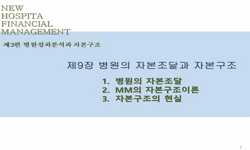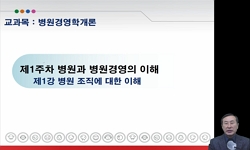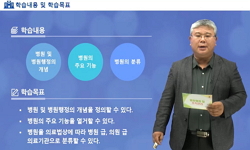Objective This study aimed to evaluate the effect of alcohol use on emergency department (ED) length of stay (LOS) among minimally injured patients by mechanism of injury. Methods This was a retrospective study of injury surveillance data for injured...
http://chineseinput.net/에서 pinyin(병음)방식으로 중국어를 변환할 수 있습니다.
변환된 중국어를 복사하여 사용하시면 됩니다.
- 中文 을 입력하시려면 zhongwen을 입력하시고 space를누르시면됩니다.
- 北京 을 입력하시려면 beijing을 입력하시고 space를 누르시면 됩니다.

Effect of alcohol use on emergency department length of stay among minimally injured patients based on mechanism of injury: multicenter observational study
한글로보기https://www.riss.kr/link?id=A106144284
- 저자
- 발행기관
- 학술지명
- 권호사항
-
발행연도
2018
-
작성언어
English
- 주제어
-
등재정보
KCI등재
-
자료형태
학술저널
-
수록면
7-13(7쪽)
-
KCI 피인용횟수
0
- DOI식별코드
- 제공처
-
0
상세조회 -
0
다운로드
부가정보
다국어 초록 (Multilingual Abstract)
Objective This study aimed to evaluate the effect of alcohol use on emergency department (ED) length of stay (LOS) among minimally injured patients by mechanism of injury.
Methods This was a retrospective study of injury surveillance data for injured patients (except poisoning), aged over 18 years, discharged home from the ED, and treated at seven academic EDs in Korea during 2008 to 2012. Patients were divided into alcohol-related and alcohol-unrelated groups based on self-report. We used multivariable quantile regression models for the analysis and adjusted covariates including age, sex, consciousness status, severity of injury, emergency medical service use, the season, day and time of visit, and hospital. To determine if there were different effects of alcohol use across mechanism of injury, all analyses were stratified by each mechanism.
Results Among 192,200 patients, 95,807 patients were analyzed. The number of participants in the alcohol-related group was 16,249 (17.0%). In the multivariable quantile regression model, the alcohol-related group had significantly longer ED LOS at the 10th (7 minutes; 95% confidence interval [CI], 6 to 8), 50th (21 minutes; 95% CI, 19 to 23), and 90th (81 minutes; 95% CI, 74 to 87) percentiles when compared to the alcohol-unrelated group. The effect of alcohol use on increased ED LOS was most prominent in motor vehicle injuries.
Conclusion We found that alcohol use was associated with increased emergency ED LOS. Furthermore, if we limited our attention to the effect of alcohol use on the number of patients, the burden of alcohol use on the ED would have been underestimated.
참고문헌 (Reference)
1 Cherpitel CJ, "Validity of self-reported alcohol consumption in the emergency room: data from the United States, Mexico and Spain" 53 : 203-207, 1992
2 McDonald AJ 3rd, "US emergency department visits for alcohol-related diseases and injuries between 1992 and 2000" 164 : 531-537, 2004
3 Pirmohamed M, "The burden of alcohol misuse on an inner-city general hospital" 93 : 291-295, 2000
4 Bernhard M, "Spinal cord injury (SCI): prehospital management" 66 : 127-139, 2005
5 Austin PC, "Quantile regression: a statistical tool for out-of-hospital research" 10 : 789-797, 2003
6 Weiss AP, "Patient- and practice-related determinants of emergency department length of stay for patients with psychiatric illness" 60 : 162-171, 2012
7 Cummins JD, "Moral hazard in insurance claiming: evidence from automobile insurance" 12 : 29-50, 1996
8 Hwang U, "Measures of crowding in the emergency department: a systematic review" 18 : 527-538, 2011
9 Coordination IC, "Maintenance group: international classification of external causes of injuries (ICECI version 1.2)" 2004
10 Herring A, "Increasing length of stay among adult visits to U.S. Emergency departments, 2001-2005" 16 : 609-616, 2009
1 Cherpitel CJ, "Validity of self-reported alcohol consumption in the emergency room: data from the United States, Mexico and Spain" 53 : 203-207, 1992
2 McDonald AJ 3rd, "US emergency department visits for alcohol-related diseases and injuries between 1992 and 2000" 164 : 531-537, 2004
3 Pirmohamed M, "The burden of alcohol misuse on an inner-city general hospital" 93 : 291-295, 2000
4 Bernhard M, "Spinal cord injury (SCI): prehospital management" 66 : 127-139, 2005
5 Austin PC, "Quantile regression: a statistical tool for out-of-hospital research" 10 : 789-797, 2003
6 Weiss AP, "Patient- and practice-related determinants of emergency department length of stay for patients with psychiatric illness" 60 : 162-171, 2012
7 Cummins JD, "Moral hazard in insurance claiming: evidence from automobile insurance" 12 : 29-50, 1996
8 Hwang U, "Measures of crowding in the emergency department: a systematic review" 18 : 527-538, 2011
9 Coordination IC, "Maintenance group: international classification of external causes of injuries (ICECI version 1.2)" 2004
10 Herring A, "Increasing length of stay among adult visits to U.S. Emergency departments, 2001-2005" 16 : 609-616, 2009
11 Honkanen R, "Impact of acute alcohol intoxication on the severity of injury: a cause-specific analysis of non-fatal trauma" 21 : 353-357, 1990
12 Lee MH, "Emergency department charges for evaluating minimally injured alcohol-impaired drivers" 54 : 593-599, 2009
13 Kim J, "Development and validation of the Excess Mortality Ratio-adjusted Injury Severity Score using the International Classification of Diseases 10th edition" 16 : 454-464, 2009
14 Woo SH, "Blood alcohol concentration and self-reported alcohol ingestion in acute poisoned patients who visited an emergency department" 21 : 24-, 2013
15 Park JO, "Association between socioeconomic status and burn injury severity" 35 : 482-490, 2009
16 O'Keeffe T, "Alcohol use increases diagnostic testing, procedures, charges, and the risk of hospital admission: a population-based study of injured patients in the emergency department" 206 : 16-22, 2013
17 Cherpitel CJ, "Alcohol and injury: multi-level analysis from the emergency room collaborative alcohol analysis project (ERCAAP)" 39 : 552-558, 2004
18 Cherpitel CJ, "Alcohol and injuries: emergency department studies in an international perspective" World Health Organization 2009
19 Cherpitel CJ, "A cross-national meta-analysis of alcohol and injury: data from the Emergency Room Collaborative Alcohol Analysis Project (ERCAAP)" 98 : 1277-1286, 2003
20 Asplin BR, "A conceptual model of emergency department crowding" 42 : 173-180, 2003
동일학술지(권/호) 다른 논문
-
- 대한응급의학회
- 장성욱
- 2018
- KCI등재
-
- 대한응급의학회
- 장익완
- 2018
- KCI등재
-
- 대한응급의학회
- Manesh R. Patel
- 2018
- KCI등재
-
- 대한응급의학회
- Hyung Lan Chang
- 2018
- KCI등재
분석정보
인용정보 인용지수 설명보기
학술지 이력
| 연월일 | 이력구분 | 이력상세 | 등재구분 |
|---|---|---|---|
| 2027 | 평가예정 | 재인증평가 신청대상 (재인증) | |
| 2021-01-01 | 평가 | 등재학술지 유지 (재인증) |  |
| 2020-05-08 | 학회명변경 | 영문명 : The Korean Society Of Emergency Medicine -> The Korean Society of Emergency Medicine |  |
| 2018-01-01 | 평가 | 등재학술지 선정 (계속평가) |  |
| 2016-01-01 | 평가 | 등재후보학술지 선정 (신규평가) |  |
학술지 인용정보
| 기준연도 | WOS-KCI 통합IF(2년) | KCIF(2년) | KCIF(3년) |
|---|---|---|---|
| 2016 | 0 | 0 | 0 |
| KCIF(4년) | KCIF(5년) | 중심성지수(3년) | 즉시성지수 |
| 0 | 0 | 0 | 0 |





 KCI
KCI






